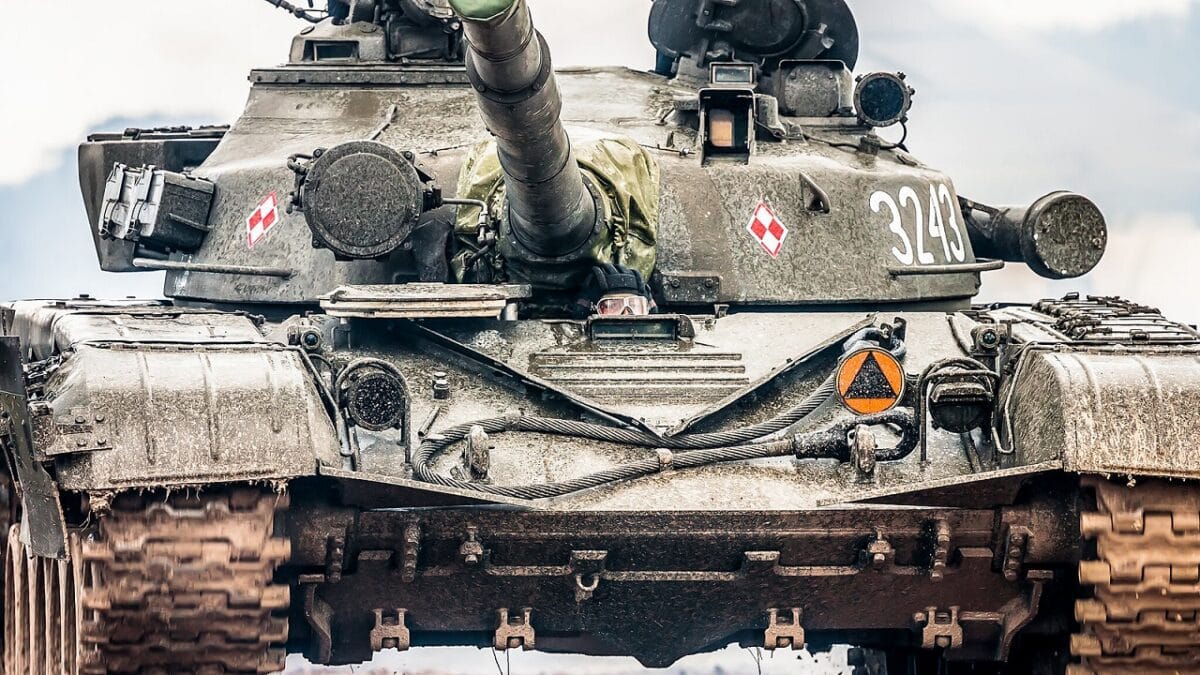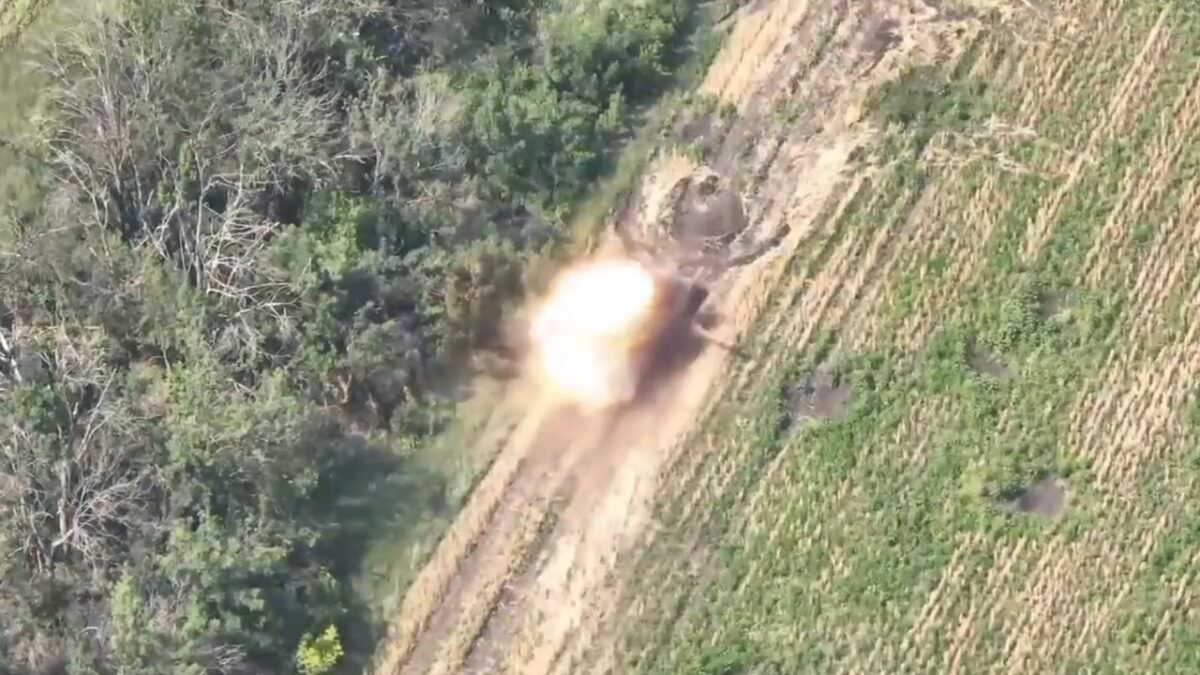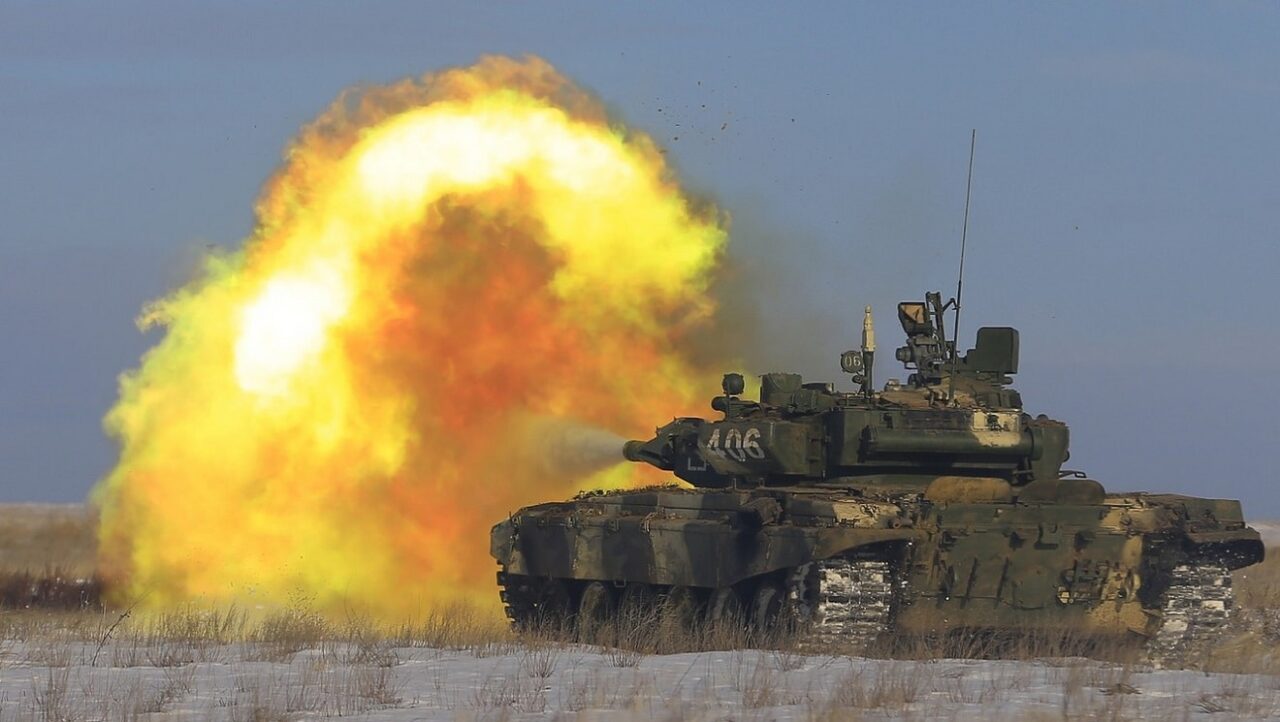Can Russia Sustain Its Tank Losses Much Longer? – American-made anti-tank weapons, notably the FGM-148 Javelin (read more of our reporting on the Javelin here), have been used to destroy hundreds of Russian tanks in Ukraine. It is a true success story for the platform, which was developed and is currently produced by Lockheed Martin. The British-Swedish-produced NLAW (read more on the NLAW here) and the Swedish-designed AT4 have also been used to good effect in Ukraine, and as the Kremlin’s armored forces continue to face setbacks, the very future of tank warfare is being put into question.
It was just last month that a pair of Russian armored vehicles, including a T-72B, rolled in the Polish capital of Warsaw, not as invaders (or “liberators” as they had been in the fall of 1944) but rather as part of a grim display of Russia’s failures and Ukraine’s success.
“This exhibition proves that Russians can be defeated,” Polish government spokesman Michal Dworczyk told reporters. “Many groups of people, mainly in Europe, said that the Russian army is invincible… This destroyed Russian equipment proves that determination and courage help in defeating the Russian army.”
The ruined hulks have since gone on display in Prague, and are scheduled to travel to Madrid and Lisbon later this summer.
Tank Failure
Russia has long been seen as having the largest tank force in the world, with some 2,800 vehicles in service with military units, while another 10,000 were in storage, Newsweek reported – citing data from the Center for Strategic and International Studies, or CSIS, for short. On paper that may sound like an impressive number, yet, military experts have long questioned the capabilities of many of those tanks.
Many of the older tanks are unreliable and/or unserviceable, and Russia has had to cannibalize parts from the least able vehicles to get others running. The situation has only worsened as Moscow continues to deal with the sanctions imposed on it, following its unprovoked invasion of Ukraine in February.
According to a report from the independent Moscow Times, Russia has lost 237 T-72B3 tanks, hundreds more T-72 variants as well as at least 170 T-80 models since the start of the attack on Ukraine in February, citing data from Oryx, an intelligence blog that tracks Russian military losses. It added that Russia’s 4th Guards Tank Division, which is solely equipped with T-80s, reportedly lost as many as 41 tanks in just two weeks, according to the military analysis platform Battle Order.
Even the Kremlin’s most advanced tank, the T-90M “Vladimir,” has failed to live up to the hype. Several have been destroyed, yet, Russia has seemed to hold back the tank in mass – likely because it fears that it will fall victim to Ukrainians just as quickly as the T-72s.
Bad Tanks or Bad Doctrine?
A number of factors have been discussed on what has led to the losses of the Russian tanks. Notably, there is a design flaw where ammunition is stored in the turret of the T-72 – and it results in the so-called “Jack-in-a-Box” effect when an anti-tank rocket strikes close to the storage, which blows the turret literally off the hull of the tank.
However, some experts have suggested that the problem is one of a failure to utilize the tanks efficiently. Instead of conducting combined operations in Ukraine, the tanks are often deployed without proper infantry support – leaving them vulnerable to attacks from man-portable weapons such as the Javelin, NLAW, and AT4.
“Tanks are supposed to fight as part of combined formations, but in terms of how they’ve been tactically used, Russia hasn’t done that effectively,” said Nick Reynolds, a military expert at the London-based Royal United Services Institute.
Coupled with the design flaw the result has been deadly!
“People used to say the best way to destroy a tank is to use another tank, but the new missiles make you wonder about that,” added James Lewis, an analyst at the Strategic and International Studies Institute in Washington.

T-72 tanks from Poland. Image Credit: Creative Commons.
As a result, Russian tankers have resorted to adopting makeshift counter-measures that include metal cages on the roof of their tanks, while others have used logs or sandbags. In addition to not being as effective as the crews may hope, it made for a pathetic display. It also could put the crew in harm’s way as these counter-measures actually limit the movement of the turret and could make it harder to escape a burning tank!
“These measures are clearly and attempt to defend tanks from above, but it doesn’t work,” said Reynolds.

Ukraine attacks Russian tanks as captured on Twitter. Image Credit: Twitter Video Screenshot.
Now a Senior Editor for 1945, Peter Suciu is a Michigan-based writer who has contributed to more than four dozen magazines, newspapers and websites. He regularly writes about military hardware, firearms history, cybersecurity and international affairs. Peter is also a Contributing Writer for Forbes.

